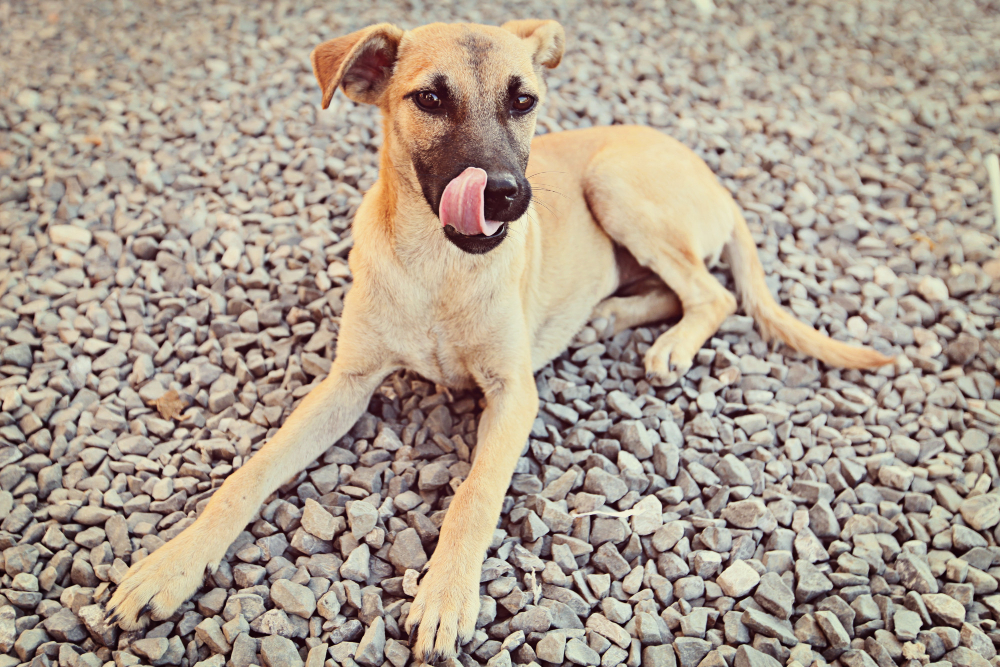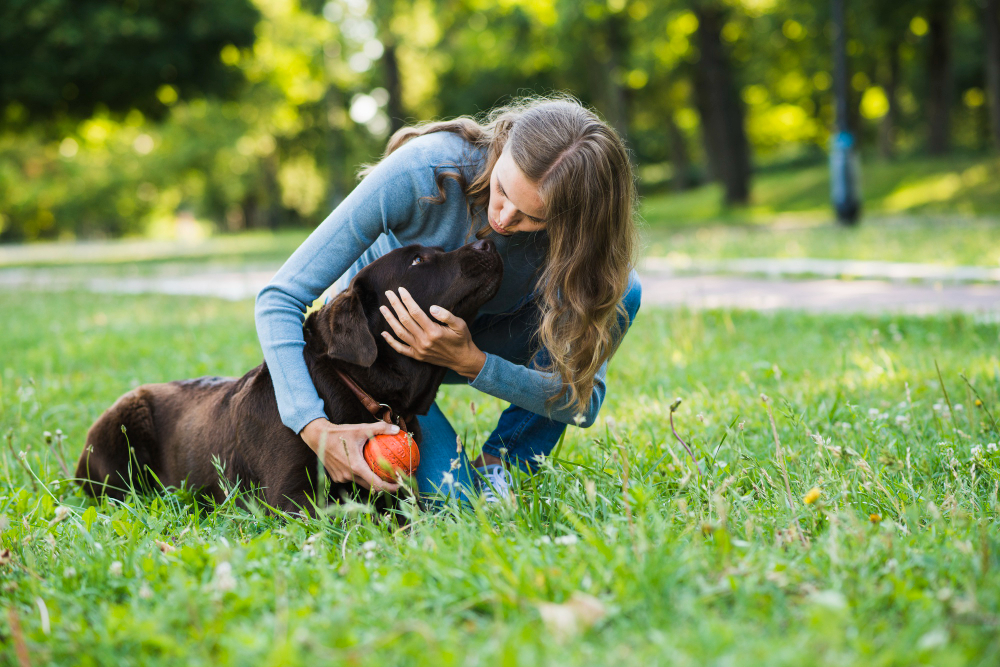
If you are a dog owner, ticks are probably your worst nightmare, and rightfully so. They carry diseases and can make your furry friend extremely sick! This is why it's essential to keep an eye out for these blood-sucking creatures.
But this is where many new and seasoned dog owners ask how to check their dogs for ticks.
Well, sit back and worry no more because today we're going to walk you through the first step of tick prevention, which is to check your dog.
So, push all your worries away as we guide you on how to check for ticks and exactly where to check for them on your dog's skin.
How to Check for Ticks?

Begin by running your fingers slowly over your dog’s fur. If you notice a swollen area or bump, check if there is a tick burrowed there. Don’t just check your furry friend’s torso. You also have to check your dog’s toes, legs, and insides ears. Also, check all around your furry pal’s face, neck, and chin.
Making sure to look for ticks on your dog daily is really important, especially if they've been in places where ticks hang out.
Ticks can stick to any part of a dog's body, but they usually prefer the feet, neck, head, and ears. Sometimes, you might find ticks in the spaces between your dog's toes or attached near their anus.
So, it's a good idea to carefully check your dog's whole body before tick removal.
Here's how to check your dog for ticks:
-
Touch and look
Start by gently feeling your dog's skin with your hands to find any weird bumps that might be ticks. If you find a bump, carefully move the fur aside for a better look. Ticks could be hiding there, so it's important to check closely.
This method helps you sense anything unusual and see if a tick is there. Doing this often helps you find ticks early and keeps your dog safe and healthy.
-
Tick or flea comb
You can also try a special comb with close-set teeth, similar to one used for fleas, to cover your pet's skin and fur.
But remember, don't use this comb to take out a tick because it might not get the whole tick out. If you sense something while you comb through your pet's fur, gently move the fur away in that spot and take a better look. This method helps you find ticks if they're there and gives you a chance to catch ticks and check closely.
-
Check Common Spots
Ticks often bite and attach themselves to areas like the feet, neck, head, and ears. Look carefully in these spots. They might also hide in the armpit and tail areas, so don't forget to check there too.
Where Should You Check Your Dog for Ticks?

Let's look at the places you should check your dogs for ticks!
-
Head
Dogs are curious, always getting their noses into everything (literally). That's why ticks often end up on their heads and inside their ears.
Ears have lots of nooks and folds. And these are places where ticks like to hide, making it a comfy spot for themselves.
When you're checking your dog, look at the outside of the ears and inside them. Ticks can stick on and stay hidden for a long time.
Moreover, if your dog keeps shaking their head and scratching their ear often, it's a sign that something's not right. That's your cue to investigate and see if a tick might be the cause.
-
Toes
Ticks are clever at finding hidden spots, and one of their favorite hideouts is between your dog's toes. They like to attach themselves there, making it a common place to find them. Check between the toes and also on the underside of your dog's feet, close to the paw pads.
Seeing your dog licking or biting their paws a lot is a sign that they're feeling uncomfortable about something. And that something might just be a tick playing hide and seek.
-
Tail
Ticks prefer dark and damp spots, so they often settle under your dog's tail. This cozy spot near the tail's base is quite the ideal spot for them.
Since many owners don't frequently check under their dog's tail, ticks can easily hang out there without being noticed for a while.
This is especially true if your dog has thick fur. So, it's a good idea to go through their fur with a comb and search carefully. A fine-toothed comb is likely to catch any ticks that have attached themselves to the tail.
-
Groin
Many dog owners aren't always excited about inspecting their dog's private parts. However, it's essential to know that ticks are also fond of these dark and damp spots on a dog's body.
Ticks find the genital area quite appealing. They can attach themselves there and stay hidden beneath the dog's fur and tail, sometimes for quite a while.
-
Eyelids
Ticks often dodge getting noticed when on or near the eyelids because they are confused with skin tags or even eye gunk.
Unfortunately, by the time many owners realize that there's a tick on their dog's eyelid, the tick has already been attached for a significant period. This isn't the best situation, as the longer a tick hangs on, the higher the chance of disease transmission.
-
Under the collar
Most dogs often wear their collars nonstop, which is a smart move to ensure they always have proper identification.
However, ticks can sneak beneath the collar without you realizing it, often until the tick has grown big enough to be spotted.
So make sure to occasionally take off the collar and check your dog for ticks.
-
Under the front leg
Ticks also often choose to attach themselves to the part of the dog's skin where a dog's front legs connect to its body – basically, the dog's armpit area.
This spot is shaded and dim, making it tricky for both dogs to reach and for you to spot them easily.
How to Prevent Ticks?

Preventing problems caused by ticks starts with keeping them from biting and attaching to your dog. Luckily, there are various safe and effective tick-prevention dog products on the market.
One option is pills and chewables. These come in forms that your dog can chew or swallow. They work not only against ticks but also against fleas, making them a convenient choice.
Another method is using topical treatments. These have to be applied directly to your dog's skin. Collars are also helpful. Collars to repel fleas and ticks are worn around your dog's neck. You can also use home and yard sprays to remove these creatures. Adult female ticks can hide in outdoor areas as well as inside your home.
Just make sure you remove the entire tick's body.
Lastly, you can also use a tick removal tool like flea combs, etc. These dog grooming accessories are easily available as well.
To decide which method is best for your dog, talk to your veterinarian, as the treatment might vary depending on your dog's coat, breed, and age.
Final Words!

Taking care of your dog is all about keeping them safe from diseases. Knowing how to check for ticks is like having a superhero power that can protect your furry friend.
By looking carefully at your dog's skin and fur, you can ensure they don't get bothered by ticks or get sick.
From their feet to their ears, every nook and cranny is worth checking. So, as you and your dog go on adventures together, don't forget to give them a routine check for ticks. It's a simple way to keep them feeling great and enjoying life to the fullest!
It is essential to not just check your dog for ticks but also carefully remove them using our guide on how to remove ticks from dogs. That's the only way you can avoid tick-borne diseases in your furry friends.
FAQs
How long do ticks live on dogs?
Adult ticks can stay attached for about a week to ten days and are most active during the fall and spring seasons. Baby ticks, like nymphs and larvae, which are active in the summer, tend to let go after around three to four days.
How often should I check my dog for ticks?
Remember to check your dog daily for ticks, especially when tick season. It's hard to find brown dog ticks. This means you have to keep checking your dog's entire body. Even if you're using stuff to keep ticks away that your vet suggests, a few ticks might still stick to your dog. So, make sure to find and remove them quickly.
What are some symptoms of a tick infestation in your dog?
Even if a dog has many ticks, it might not show any signs because a tick bite is usually not painful. However, if there are many tick bites, they should be easier to spot on your dog. If you find lots of ticks on your dog, it's essential to take them to a vet hospital soon. A vet can remove the ticks right away.
When a pet has many ticks, there's a higher chance they could get other tick-borne diseases such as Lyme disease. Your dog may also get tick paralysis. This is when adult female ticks bite your dogs. So, removing the ticks fast is essential.
After that, watching for signs of tick diseases is crucial for a few weeks. A tick titer test can be done to check for different tick diseases too.



















